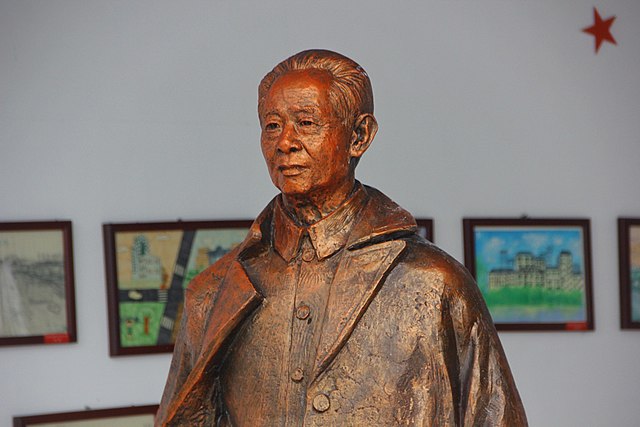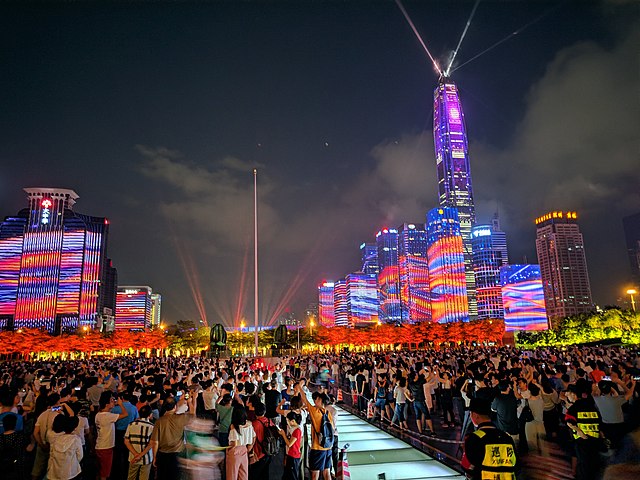History of the People's Republic of China (1949–1976)
The time period in China from the founding of the People's Republic in 1949 until Mao's death in 1976 is commonly known as Maoist China and Red China. The history of the People's Republic of China is often divided distinctly by historians into the Mao era and the post-Mao era. The country's Mao era lasted from the founding of the People's republic on 1 October 1949 to Deng Xiaoping's consolidation of power and policy reversal at the Third Plenum of the 11th Party Congress on 22 December 1978. The Mao era focuses on Mao Zedong's social movements from the early 1950s on, including land reform, the Great Leap Forward and the Cultural Revolution. The Great Chinese Famine, one of the worst famines in human history, occurred during this era.
Mao Zedong with Nikita Khrushchev, Ho Chi Minh and Soong Ching-ling during a state dinner in Beijing, 1959
The Chinese economic reform or Chinese economic miracle, also known domestically as reform and opening-up, refers to a variety of economic reforms termed "socialism with Chinese characteristics" and "socialist market economy" in the People's Republic of China (PRC) that began in the late 20th century, after Mao Zedong's death in 1976. Guided by Deng Xiaoping, who is often credited as the "General Architect", the reforms were launched by reformists within the ruling Chinese Communist Party (CCP) on December 18, 1978, during the "Boluan Fanzheng" period. The reforms briefly went into stagnation after the 1989 Tiananmen Square protests and massacre, but were revived after Deng Xiaoping's southern tour in 1992. The reforms led to significant economic growth for China within the successive decades, considered to be one of the economic miracles in human history. In 2010, China overtook Japan as the world's second-largest economy by nominal GDP, before overtaking the United States in 2016 as the world's largest economy by GDP (PPP). On the other hand, a parallel set of political reforms were launched by Deng and his allies in the 1980s, but eventually ended in 1989 due to the crackdown on Tiananmen Square protests, halting further political liberalization.

The image of Deng Xiaoping in Shenzhen, Guangdong, one of the first special economic zones approved by Deng in 1979
Hu Yaobang, then General Secretary of CCP, played an important role in implementing the reforms together with Zhao Ziyang, then Premier of China.
Shenzhen, one of the first special economic zones of China and the "Silicon Valley of China". Notable high-tech companies such as Huawei, ZTE and Konka were all founded in Shenzhen in the 1980s.
The slogan "Time is Money, Efficiency is Life" from Shekou, Shenzhen, representing the "Shenzhen speed"





